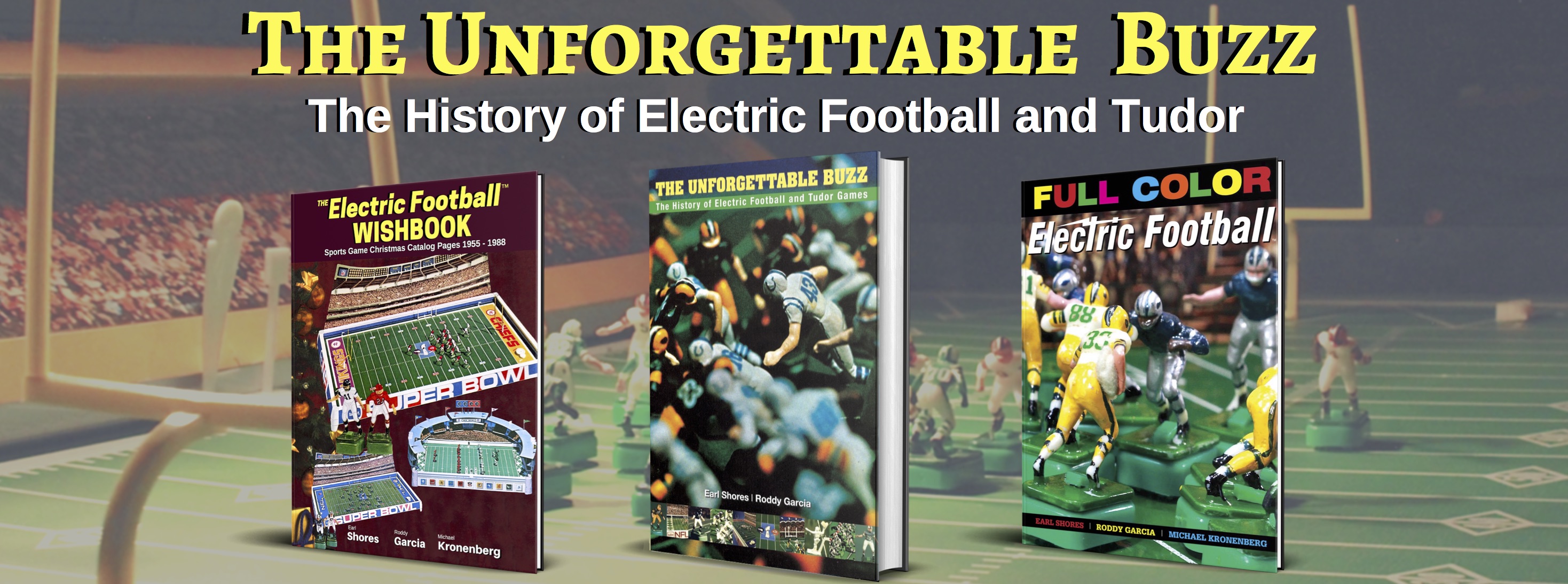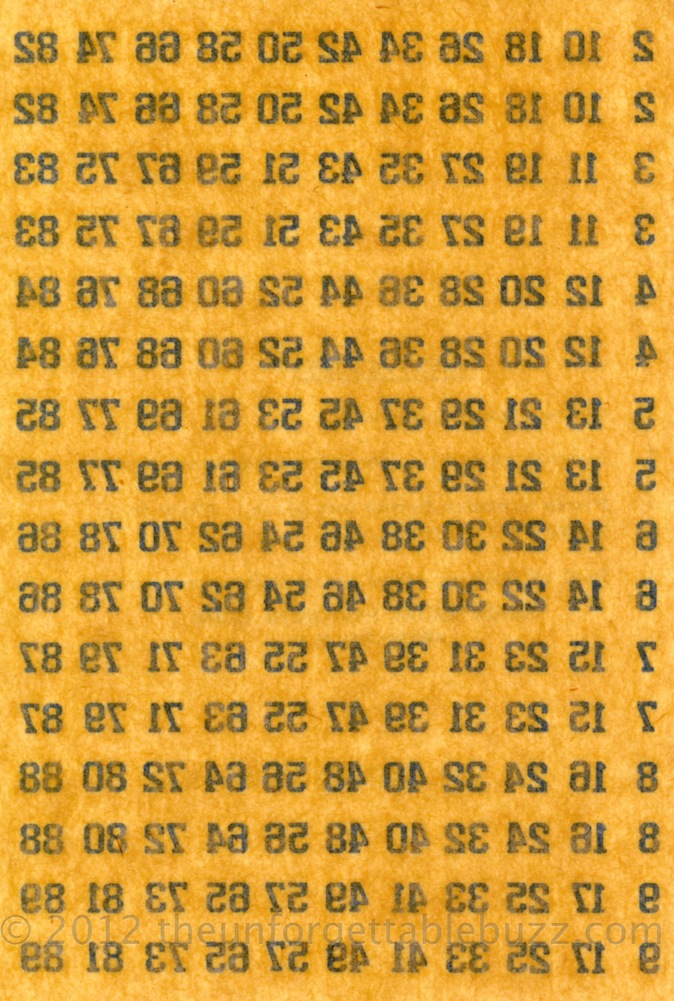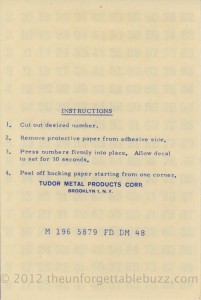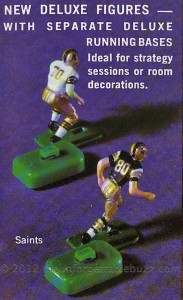One of my favorite things to discover in an old electric football game – besides large teams – is a sheet of Tudor’s original press-on numbers. Most prized, of course, is an unused sheet. A sheet that’s cut but still has the original brown backing paper is not a bad find either. Uncovered fuzz-encrusted sheets are still cool for dating the find, but they won’t make into the permanent part of the collection.
I’m not sure exactly what it is that’s so fascinating. I guess the fact that something so inherently fragile has survived intact for all these years is the main appeal. But there is also the “potential” they carry…the excitement we felt to have a pristine number sheet in hand, ready to create “our” team. And at the time it was just a number sheet, nobody realized that number sheets of the press-on variety were on borrowed time from the day the first NFL games shipped out of Tudor.
The sheets definitely help date a team or a game. There’s no question that all the 1967 games were shipped with press-on numbers, and most likely the games from 1968 too. (Teams from the AFL No. 520 games seem to be all press-on.) From there, like most changes in electric football, things get murky. The Sears’ Super Bowl III Jets-Colts game that Santa delivered to me in 1969 came with green and white press-on sheets (still have the players as proof). But I have collected No. 620’s and No. 510’s with peel-off sheets.
Neither Norman Sas nor Lee Payne could give us a definite “when” for the change over. Complicating things even more is that Tudor would have continued to ship out the remaining inventory of press-on sheets long after their manufacturing had been discontinued. But the “why’s” were pretty obvious. The peel-off number sheets were cheaper to make, and easier for kids to use.
But they never looked quite as good as those originals.
Earl
P.S. My most-prized unused press-on sheet has Gold numbers…”perchance to dream…”



